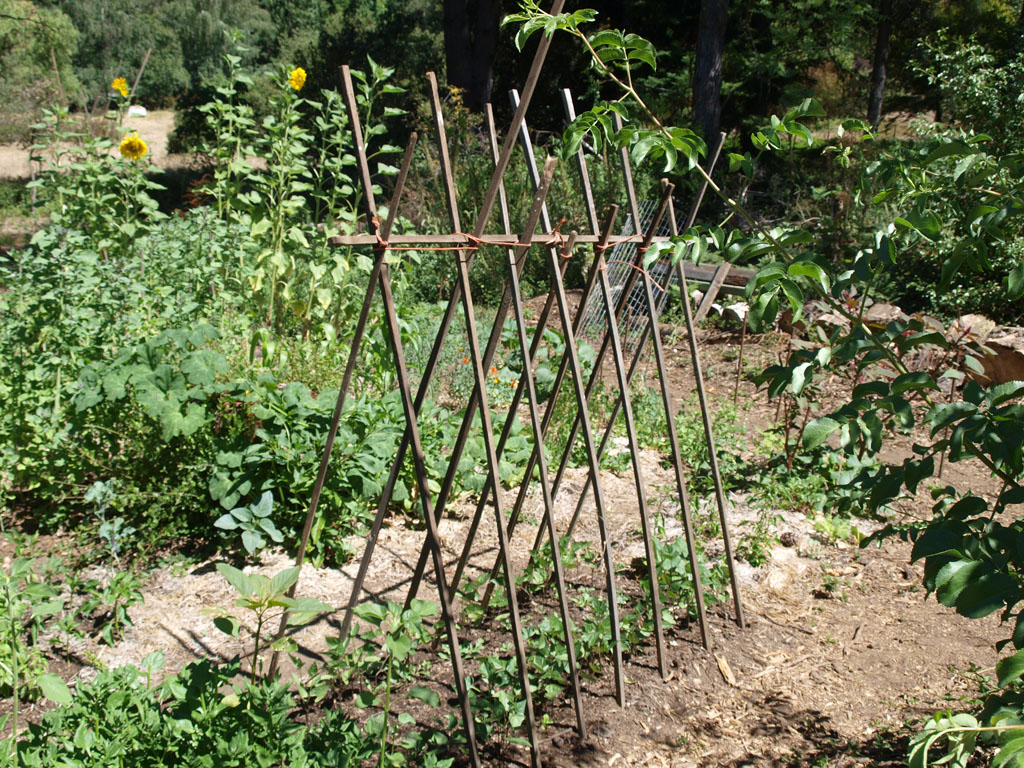Supporting plants
Why plants need support
A number of crops (notably pole beans, pole peas and vining cucumbers and squash) are true vines and their spindly stems are totally incapable of supporting them. If they aren’t supported, they will simply grow flat along the ground. Tomato plants are capable of supporting themselves when they are young, but as they get bigger and develop a heavy weight of foliage and fruit they will fall over unless given some support.
In all of these cases the plants will produce more usable food when kept off of the ground. There is less pest damage, as the edible part is kept well above the soil, which has moisture and lots of hiding places for pests. There is also less disease, which can be encouraged by the high humidity and poor air circulation near the ground, as well as by soil splashing on the plants. The fruits also tend to be cleaner and of higher quality.
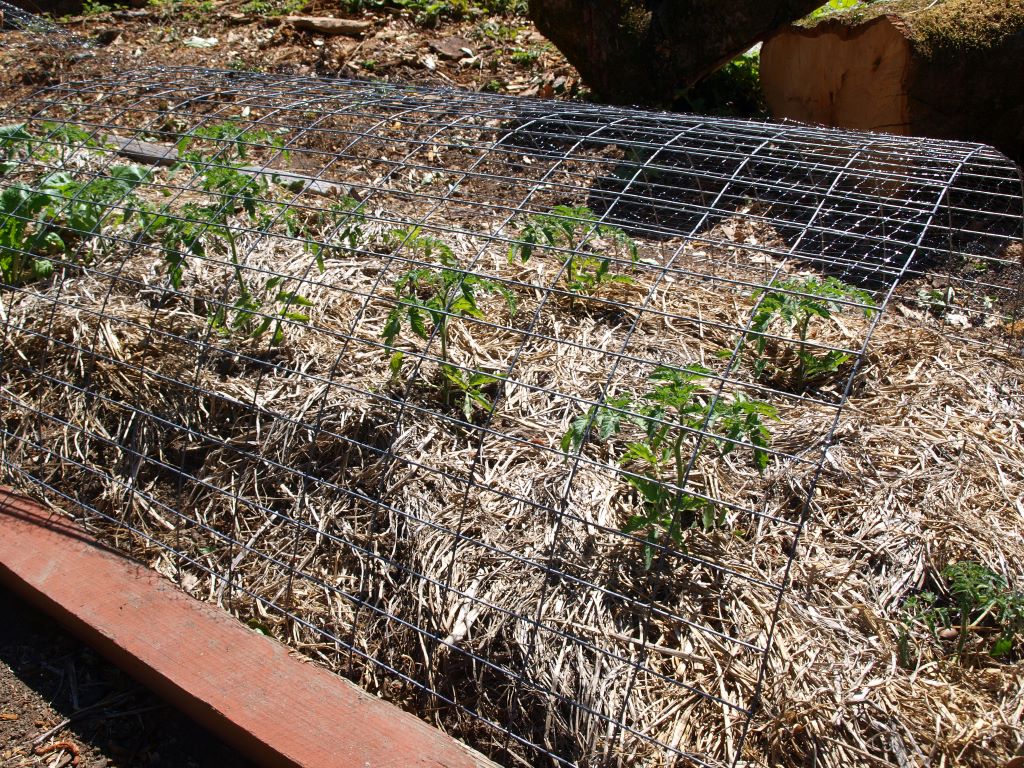
The only time I have had major problems with tomatoes in my present garden, was when I experimented with growing them unsupported on the ground. It was a total mess with major pest and disease problems and I ended up simple removing them without harvesting anything.
Another benefit of supporting plants, is that you can train them low growing, sprawling plants vertically upward and so greatly reduce the amount of bed space they need. This can be a very helpful in small gardens, where space is at a premium.
The kind of support you need will depend upon the nature of the plant. Does it have tendrils like a pea, or does it twine like a pole bean. Will it get heavy like a winter squash, or does it stay pretty light like a pea. Does it have to be strong to withstand high winds.
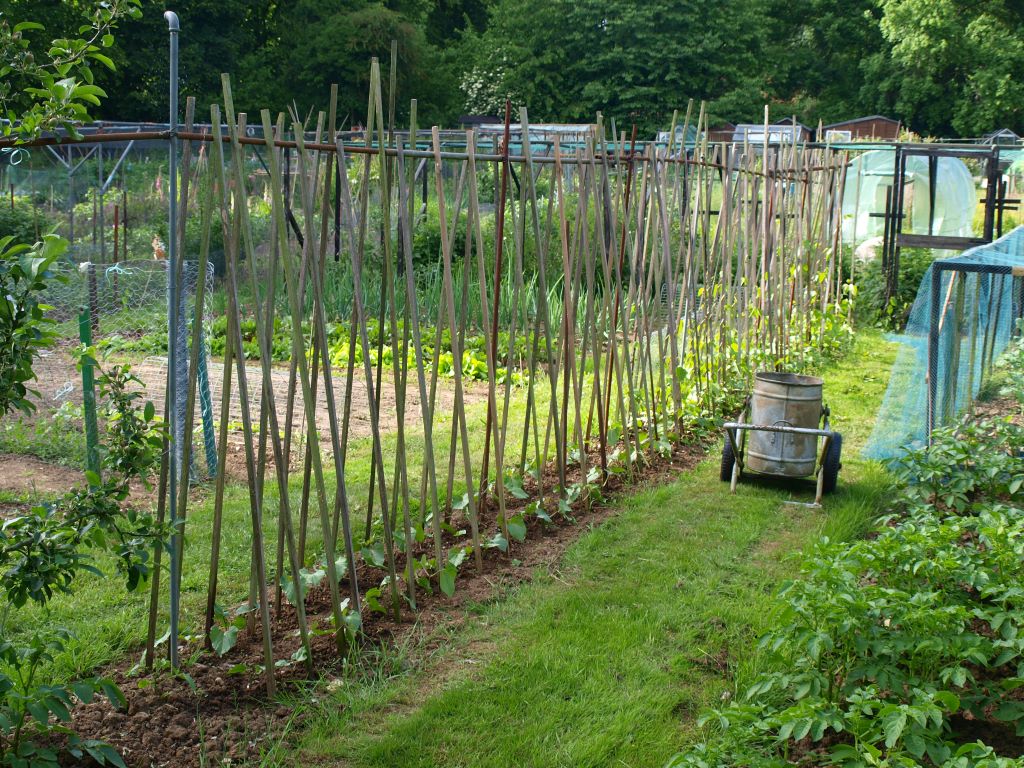
Ideas for support
It is a good idea to erect any supporting structure before you put your transplants in the ground. Then they won’t be in the way and won’t get damaged by a stray pole.
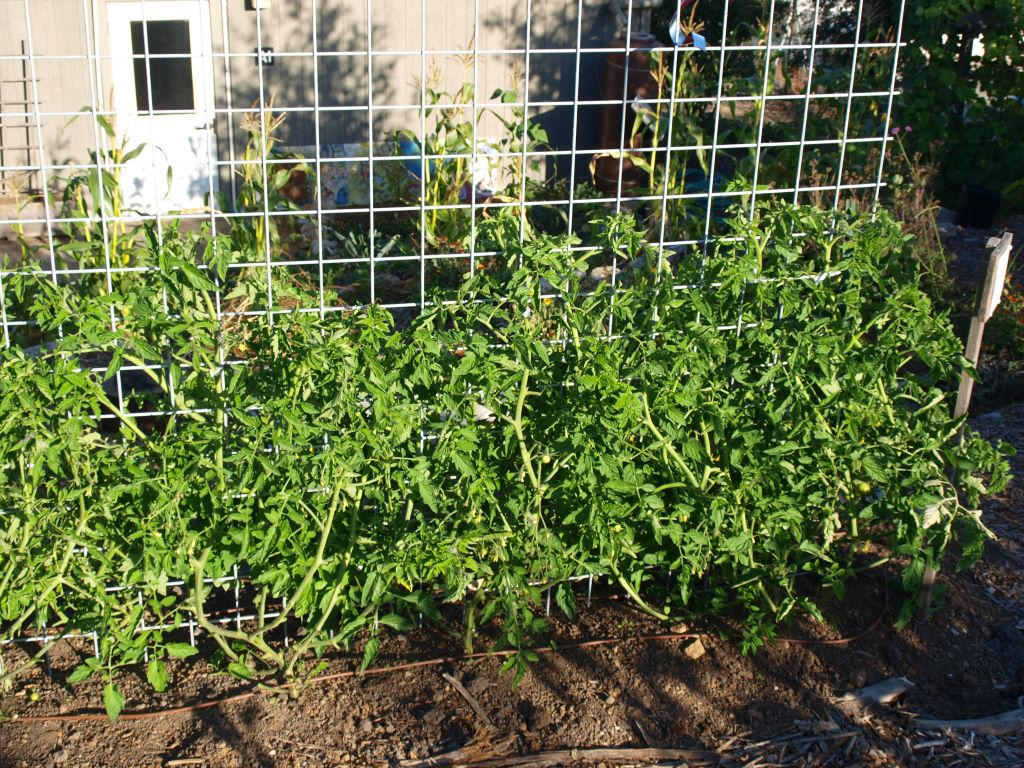
Fences
The simplest method of support is to train plants up existing wire fences. This works very well and makes the fences look more attractive. It doesn’t work if the fence is intended to exclude deer, as they will eat whatever plant parts hang on the outside.

Structures
Any vertical structure (wall, fence, shed, house) can be used as support if you attach netting, or run strings up it. As a bonus the plants will help to soften it visually, and can even be used to disguise any ugly feature in your garden.
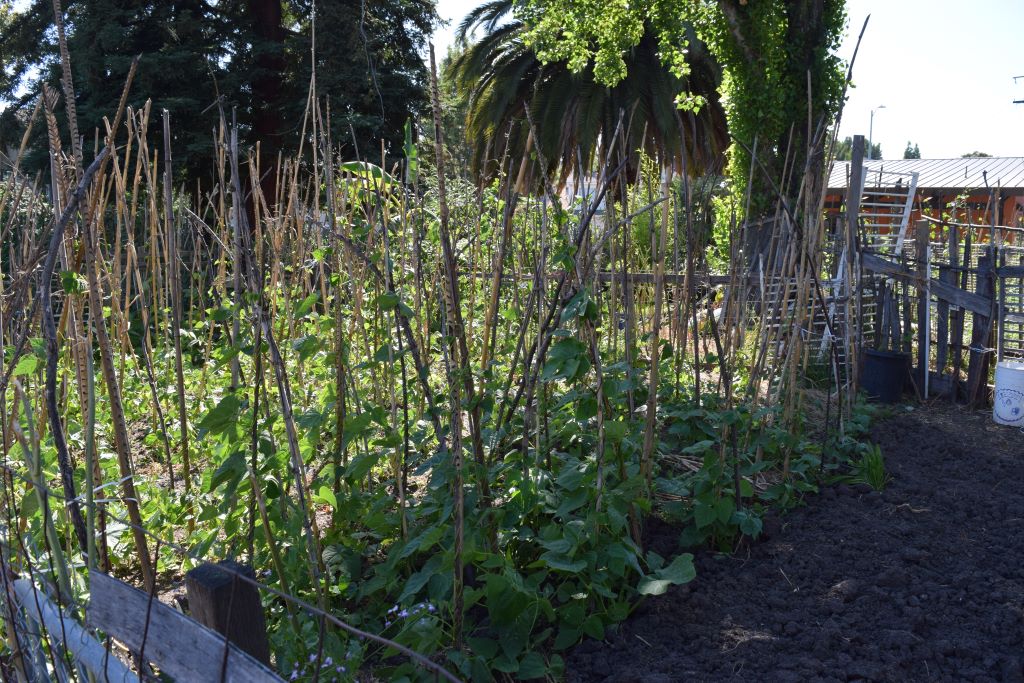
Poles
The next simplest supports are 6 – 8 foot poles of bamboo, scrap wood, or even metal pipe, stuck into the ground. These are very versatile and can be used singly, lashed together into various configurations, or combined with string. When covered in a vigorous growth of plants they also work very effectively as attractive screens.
To make the above structure push each pole or cane 6” into the ground to give it some stability. Each one will stand by itself and when connected they become very strong. The first time I tried to make this kind of structure, I simply stood them on the ground. This doesn’t work at all, as they have no lateral stability whatsoever.
Bamboo can (and probably should) be grown in the garden to supply poles for garden use. It must be confined however, or it can become a problem. You can sometimes get free canes from people who need their bamboo kept under control.

As a carpenter I often come across half rotten redwood boards and I find I can rip any sound parts lengthwise to make excellent 3/4 x 3/4” square poles. These are now my standard support material. Any wood can be used for this, it doesn’t have to be rot resistant (the part touching the ground will just decay faster.)
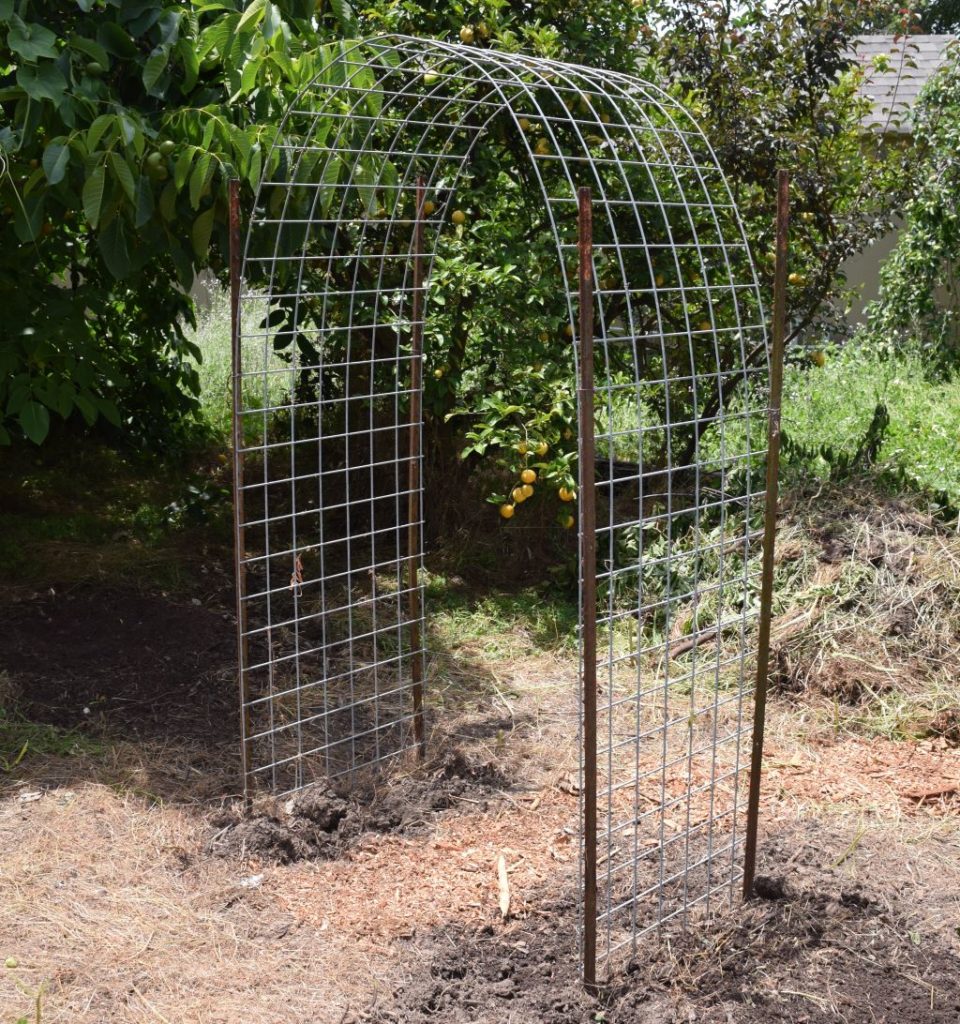
Netting
This is good for supporting many plants as it gives them many places to cling on to, though it usually requires some support itself. You can buy plastic netting for this purpose (you attach it to a rigid frame for support), but I prefer to use wire netting It is a lot more durable and lasts almost indefinitely and it doesn’t get tangled).
More rigid wire such as hog wire or concrete reinforcing wire is actually self-supporting and can be shaped into tall columns, which are quite ornamental when covered in vines. They will probably require a stake or two to prevent them getting blown over by strong wind).
Wire tunnels
You can also open up these wire cylinders and spread them across the bed like semi-cylindrical wire cloche frames. The plants will grow up through the mesh and sprawl on the top. This can be covered with plastic to protect the plants early in the season and taken off as the weather warms up.
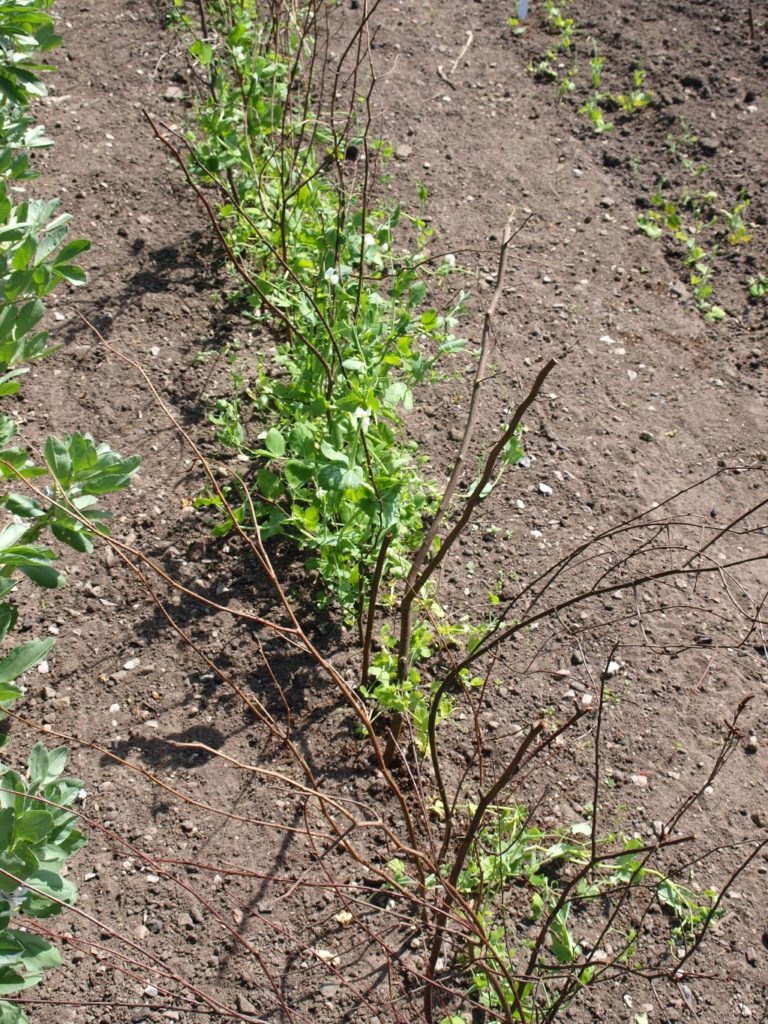
Pea sticks
A traditional English plant support is the pea stick, which is simply a slender but sturdy branch of Hazel bush (most other kinds of brushwood work just as good) about 4’ tall.
The twigs are trimmed of branches on two sides to leave a flat branches support (see illustration). They are flat so they can be inserted into the soil in close rows. I like these because you can make them for free and they will eventually recycle themselves.
Corn stalks
Living corn plants provide good support for beans, either in a three sisters arrangement (corn, beans and squash together), or simply as a follow on crop (leave the corn stalks in place).

Posts
Metal T posts can provide sturdy but easily moved temporary supports. .
More permanent, stable and very strong supports might be installed at strategic places around the garden, for use as required (perhaps at each end of the bed. These could be 4˝ x 4˝ fence posts, eight feet long and sunk 18 – 36˝ into the ground. Screw metal eyes into them, so you can attach strings (or galvanized wires) between them as needed.











